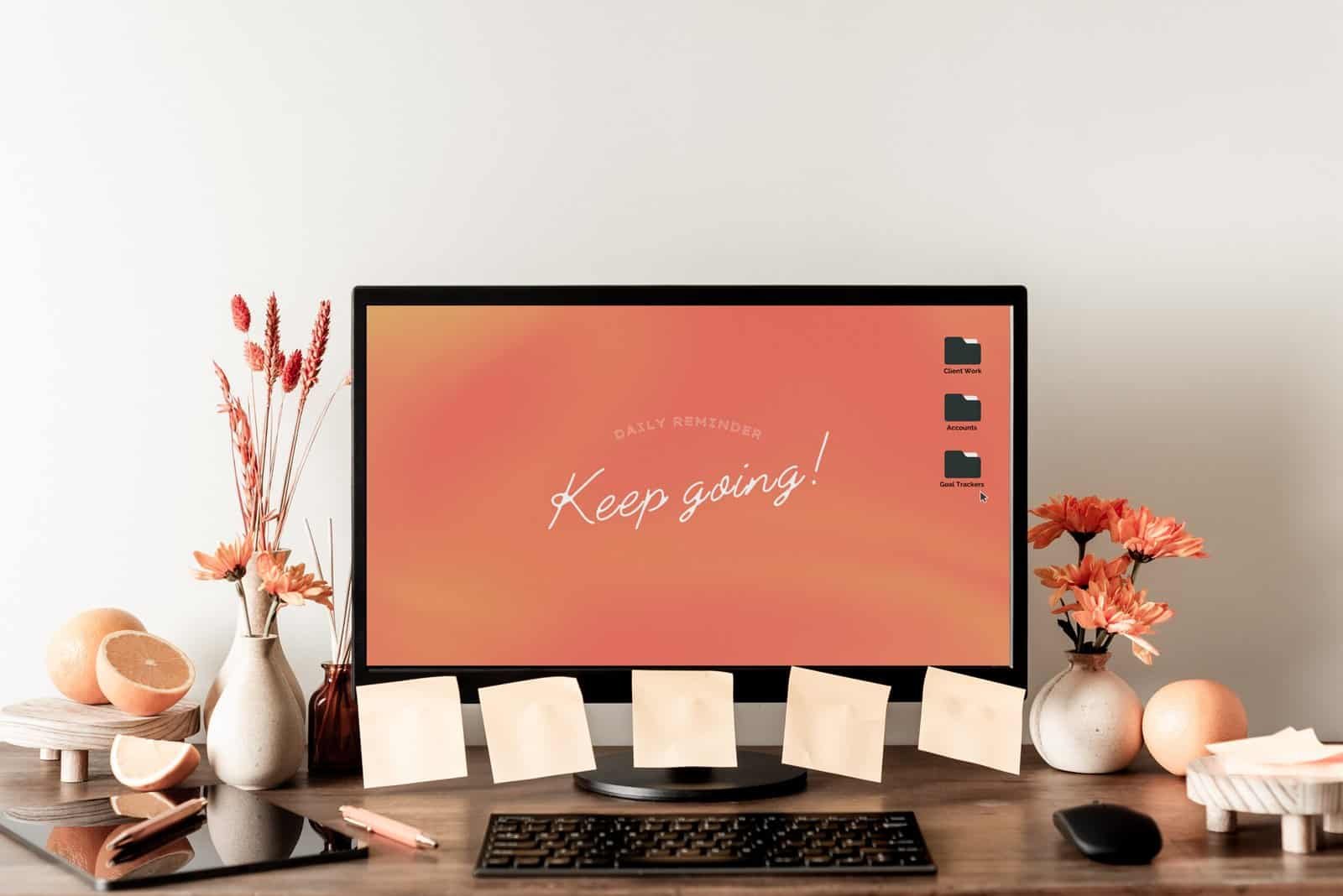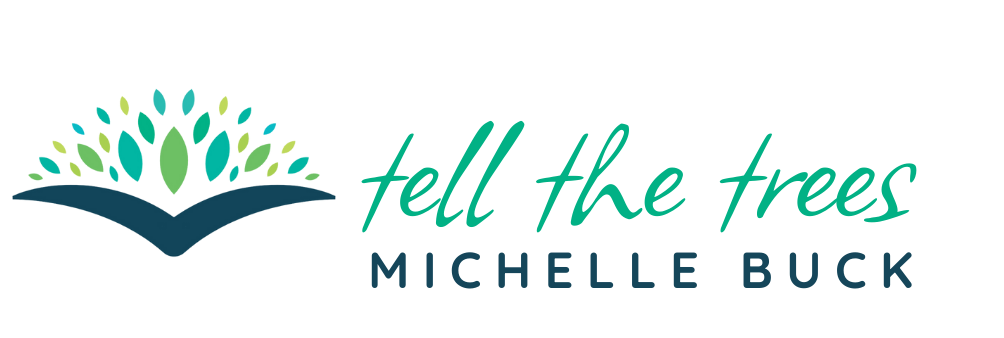by Michelle
Share
by Michelle
Share

When building a personal brand, you need to research what your brand is already showing your audience, which I posted about here. If you need a refresher to personal branding, start here.
In this post, I’ll talk about how to amp up your personal brand so that it’s showing your best self.
Here are some questions to start with:
- In what areas do you excel?
- What motivates you?
- What have others said about you?
- What do you want to be known for?
The answers to these questions can be a great start to building your personal brand. Remember, it’s not about being someone else. It’s about putting your best traits on display for others to get to know you.
Use Personality and Career Testing to Define Your Personal Brand
Over the years, I’ve taken many online tests, as well as professional tests to learn more about myself. Some of them were required in my jobs to see how I fit in with others. Some of them I took to learn more about myself or wanted to know why I was a certain way.
I learned I am introverted, and that was freeing because I had always felt that I need to fit into a certain mold. I didn’t like attention put on me, or having to speak in groups, and the people I worked with or were friends with would ridicule me for that. When I learned more about myself, I started finding people that supported me instead of trampling on me. It really changed how I viewed relationships and my career.
The nice thing about taking assessments is that they will show your strengths and weaknesses in a report. You will notice after taking a few that some things stand out.
Paid Personality Tests
Strengths Finder 2.0 – This is an assessment which also has a book that allows you to read about your top five traits. For example, my top trait is empathy. So the book explained what empathy is, how it shows up in my work and personal life, and ways to use it with other personality types.
Kolbe Assessment – If you have ever worked for a company that uses EOS (Entrepreneurial Operating System), then you probably have taken this test. It focuses on your instinctive strengths rather your smarts or personality. They focus on a term call “conative” which means action derived from instinct.
In my results, I found out that the best way for me to gather and share information is to explain which might look like: paraphrasing a report, reviewing the data, editing the details, working within priorities, starting with the highest probability, using terms properly, responding appropriately, testing analogies, clarifying specifics, or rewriting and fact-checking written material. What does that sound like? An author! My results showed that I liked to explain, systematize, modify, and envision and examples were provided for each.
Free Personality Tests
16 Personalities (free) – Unlike the previous tests I mentioned, this one is more about your personality. It’s based on introvert and extrovert scales, but gives you some ideas for how you fit in the world and how you can use your strengths. For a free test, I found the information eye opening.
I’m an INFJ, which they refer to as “quiet visionaries” that are deep thinkers and have great imaginations. When I read the results, I felt validated and understood. I found this test was in line with my findings in other tests, such as the Strengths Finder. Both tests showed I had a strong sense of empathy and responsibility.
The Big Five Aspects Scale (free) – This test measures 5 different areas: openness to experience, conscientiousness, extraversion, agreeableness, and neuroticism. For openness to experience, this measures the interest in art, literature, abstract thinking, philosophy, and emotions and beauty.
Since I scored higher in this area, I was surprised when I found out that those with lower levels are more able to adapt to one path in life. High scorers likely would get bored with a single path and pursue more challenging opportunities.
There are some other tests that you can try such as the DISC Assessment, Culture Index, and Career Assessments, but basically taking 1-3 of them will give you a good idea of some common themes in your personality, work, and relationships. It can help you define your motivations, strengths, and abilities.
Personal Brand Values
Companies will often tout their core values as a part of their work ecosystem. These are values that the company lives by and uses to make decisions. For a personal brand, you can set the foundation with values that align with who you are and who you want to be.
Visit James Clear list of values and select 5 that fit your brand.
For my brand, empathy was not listed. I still added it because it was a word that kept showing up for me in assessments and in my life. I thought it was important to include it. You may find a word isn’t on the list so feel free to use it if it fits.
Assess Your Skills
If you took part in an assessment, you might already have a good idea of your skill set. Write down any skills you have been recognized for or that you know you have. What skills did teachers or adults praise you for as a child or in college? These are important to write as well.
There are two kinds of skills to consider:
Soft Skills – skills that come to you easily or naturally. These skills might include being a natural leader, adept at listening and working through conflict, or being good at time management.
Hard Skills – skills that are measured and defined. This could be any skill you hold a degree or certification for, or things you learned on a job.
Soft Skills vs. Hard Skills Examples
Soft Skills
- Creativity
- Persuasion
- Collaboration
- Adapaptability
- Emotional Intelligence (EQ)
- Communication
- Organization
- Teamwork
- Flexibility
- Management
Hard Skills
- Sales
- Affiliate Marketing
- Blockchain
- Coding
- Graphic Design
- Writing, Editing, or Proofreading
- Cash Flow Management
- Proficiency in a foreign language
- Public Speaking
Think of 5-10 skills from each category and use it to define your personal brand.
Audience Statement
In my first post, we reviewed how to research your audience. Based on that research, you can build an audience statement that incorporates who you are and who you help.
Here’s an example template: I ________________(help, assist, teach) _______________________ (specific noun: women bloggers, small business owners, budding artists) how to ____________________________(result: build a business, create art for Etsy, write a book) so that they can _________________________ (outcome: be successful entrepreneurs, become a best-selling author, become financially stable.)
Tweak this and use some emotional words. Here are a few examples.
- I help struggling women bloggers that want to build a thriving business so they can become successful business owners and obtain financial stability.
- I teach stressed out stay at home moms how to manage their health so they can focus on their families and find joy in the small moments of life.
The words in bold are emotional power words. Find more power words here.
Create your own audience statement using the template and examples above.

Plan out your personal brand
Your Personal Brand Mission Statement
Most businesses have a mission statement. We can learn from these examples when building a personal brand mission statement. Most companies use these two elements when building a mission statement:
- Statement about what the company does
- Stating what the company hopes to do
Here are a few well-known statements we can mimic:
- “If something is important enough, you should try, even if the probable outcome is failure.” – Elon Musk, CEO of Tesla
- “To make people happy.” -Walt Disney, Found of the Walt Disney Company
- “To be a teacher. And to be known for inspiring my students more than they thought they could be.” – Oprah Winfrey, Founder of the Oprah Winfrey Network
Look again at your audience statement. You can use the same theme or words in your mission statement. A mission statement can be as simple as “to make people happy” or it can be a few sentences. Consider your core values when writing a mission statement.
Wrap It Up
Once you have your defined and fine-tuned your personal brand, you can use these statements on your website, social media channels, or your signature line. These statements can help you align your content with what your goals are and who you want to help.
Your core values and skills define these statements, so when you write content, see if it aligns with your audience and mission statements. It’s a great way to keep yourself on course.
In my next post, you will learn how to write a brand story.
Tell the Trees is supported by its readers. When you make a purchase using links on this site, it may result in affiliate commission. Please visit my affiliate disclosure page for more information.
Let's Discuss It
Accessibility isn’t just nice to have; in fact, it’s now more important than ever. In 2025, over 1.3 billion people worldwide live with some form of disability, and many use e-readers or screen readers to access digital content. Yet most self-published authors continue to create ebooks that unintentionally exclude these readers. Microsoft Word, a tool
After my post about the European Accessibility Act, I got some fantastic questions from you that made me realize we need to have a more practical conversation especially regarding digital products. My original post focused on what’s been published — either written by lawyers for lawyers or aimed at big publishers with compliance departments. But what
One of the most often missed topics when it comes to writing and your office workspace is productivity. As a writer, you are focused on drafting, editing, book covers, ARC Reviews, and other important self-publishing topics, we forget that there are more efficient ways to do things. In your office or writing space, you might
The biggest threat for authors on Substack isn't competition or algorithm changes. It's something far more basic: the platform itself. Let's learn more.














